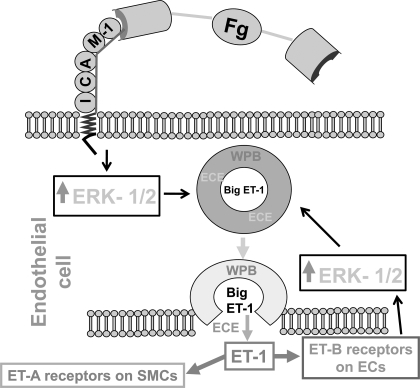Fig. 5.
Schematic representation of the proposed hypothesis for Fg-induced production of ET-1 from endothelial cells. At pathologically high levels of Fg, its binding to endothelial ICAM-1 is increased. This leads to activation of ERK-1/2. Activated ERK-1/2 induces enhanced exocytosis of WPBs that contain Big ET-1 and endothelin-converting enzyme (ECE). During exocytosis of WPB, Big ET-1 is released from the WPBs and comes into contact with ECE, which converts Big ET-1 to ET-1. This newly formed ET-1 binds to endothelin type A (ET-A) receptors on vascular smooth muscle cells (SMCs) and endothelin type B (ET-B) receptors on ECs. Binding of ET-1 to ET-B causes further activation of endothelial ERK-1/2, leading to an increase in ET-1 production. Binding of ET-1 to ET-A receptors on SMCs causes vascular constriction.

